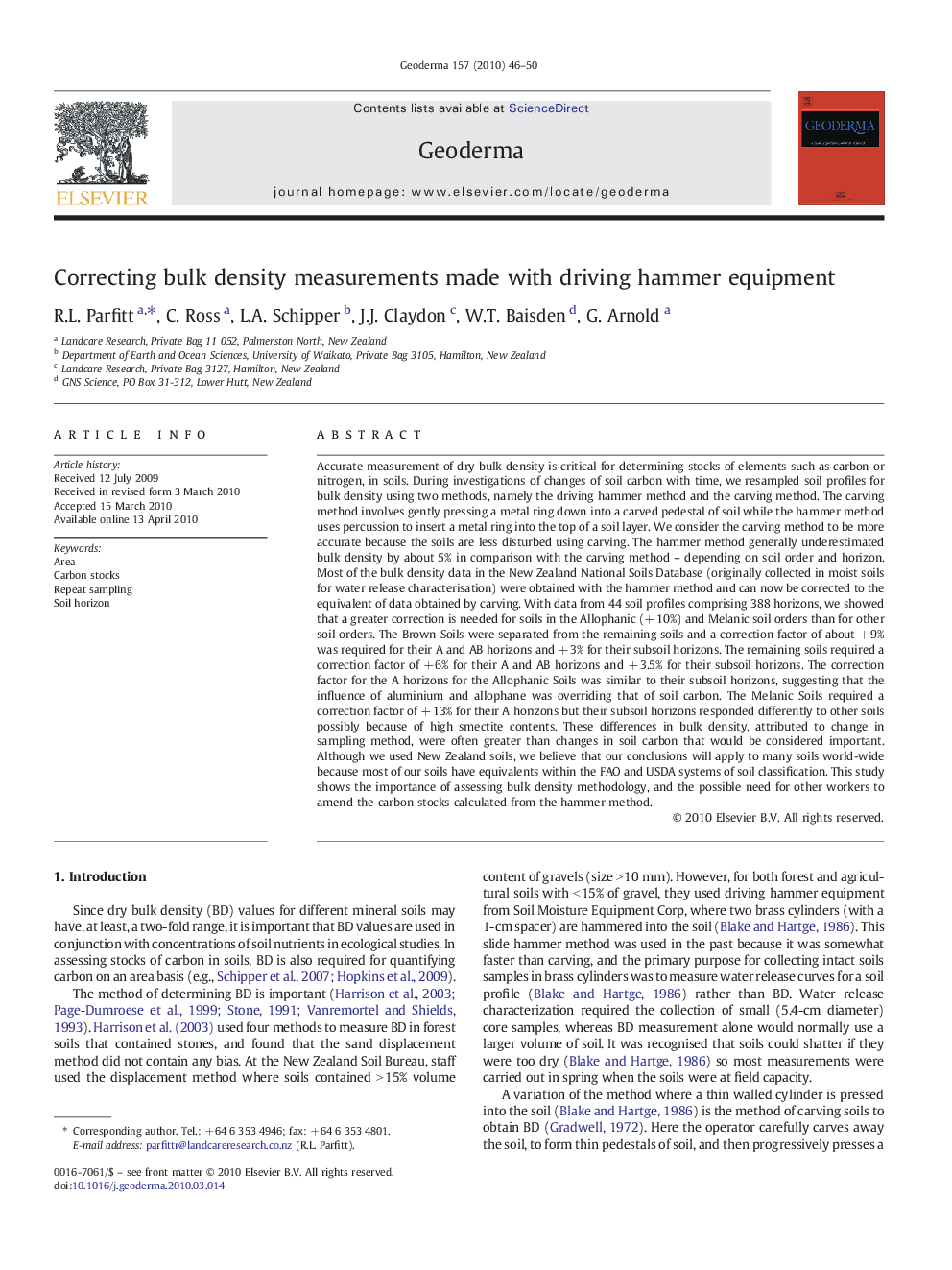| کد مقاله | کد نشریه | سال انتشار | مقاله انگلیسی | نسخه تمام متن |
|---|---|---|---|---|
| 4574799 | 1629520 | 2010 | 5 صفحه PDF | دانلود رایگان |

Accurate measurement of dry bulk density is critical for determining stocks of elements such as carbon or nitrogen, in soils. During investigations of changes of soil carbon with time, we resampled soil profiles for bulk density using two methods, namely the driving hammer method and the carving method. The carving method involves gently pressing a metal ring down into a carved pedestal of soil while the hammer method uses percussion to insert a metal ring into the top of a soil layer. We consider the carving method to be more accurate because the soils are less disturbed using carving. The hammer method generally underestimated bulk density by about 5% in comparison with the carving method – depending on soil order and horizon. Most of the bulk density data in the New Zealand National Soils Database (originally collected in moist soils for water release characterisation) were obtained with the hammer method and can now be corrected to the equivalent of data obtained by carving. With data from 44 soil profiles comprising 388 horizons, we showed that a greater correction is needed for soils in the Allophanic (+ 10%) and Melanic soil orders than for other soil orders. The Brown Soils were separated from the remaining soils and a correction factor of about + 9% was required for their A and AB horizons and + 3% for their subsoil horizons. The remaining soils required a correction factor of + 6% for their A and AB horizons and + 3.5% for their subsoil horizons. The correction factor for the A horizons for the Allophanic Soils was similar to their subsoil horizons, suggesting that the influence of aluminium and allophane was overriding that of soil carbon. The Melanic Soils required a correction factor of + 13% for their A horizons but their subsoil horizons responded differently to other soils possibly because of high smectite contents. These differences in bulk density, attributed to change in sampling method, were often greater than changes in soil carbon that would be considered important. Although we used New Zealand soils, we believe that our conclusions will apply to many soils world-wide because most of our soils have equivalents within the FAO and USDA systems of soil classification. This study shows the importance of assessing bulk density methodology, and the possible need for other workers to amend the carbon stocks calculated from the hammer method.
Journal: Geoderma - Volume 157, Issues 1–2, 15 June 2010, Pages 46–50